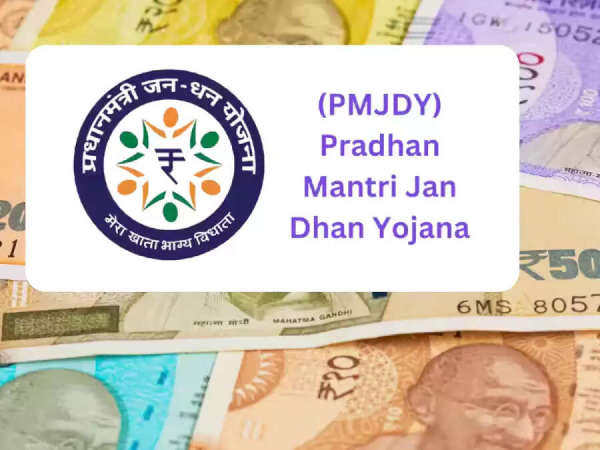Mantras in Yoga: What they mean and how to use them during practice
Why Mantras Matter in YogaIn the fast-paced world we live in, yoga offers a sanctuary—a space to breathe, move mindfully, and reconnect with ourselves. But there’s a deeper layer to yoga that often goes unexplored: mantras.
 Mantras are sacred sounds, syllables, or phrases repeated during yoga or meditation. Rooted in ancient Sanskrit, these powerful vibrations aren’t just words; they are energetic tools that can transform your inner state, calm the mind, and bring clarity to your soul.
Mantras are sacred sounds, syllables, or phrases repeated during yoga or meditation. Rooted in ancient Sanskrit, these powerful vibrations aren’t just words; they are energetic tools that can transform your inner state, calm the mind, and bring clarity to your soul.
Let’s take a journey into the world of mantras in yoga—what they truly mean, how they work, and how you can use them effectively during your practice.
What Is a Mantra? The word mantra comes from two Sanskrit words:
The word mantra comes from two Sanskrit words:
Think of a mantra as a vibration that cuts through mental noise. Whether you chant it aloud or silently, it can center your attention and open the door to deeper meditation and stillness.
The Role of Mantras in YogaMantras play a central role in many forms of yoga—especially in Bhakti Yoga (devotion), Kundalini Yoga, and Raja Yoga (meditative path).
Here’s how mantras elevate your practice:
 Let’s explore some of the most widely used mantras in yoga and what they mean:
Let’s explore some of the most widely used mantras in yoga and what they mean:
1. Om (AUM)
Pronunciation: A-U-M
Meaning: The sound of the universe. Om is the primal vibration that represents creation, preservation, and destruction.
Use: Chanted at the beginning or end of a yoga class to align mind, body, and spirit.
2. So Hum Pronunciation: Soooo… Hummm…
Meaning: “I am that.” This mantra reflects the belief that we are one with the universe.
Use: Excellent for breath meditation. Inhale “So,” exhale “Hum.”
3. Sat Nam Meaning: “Truth is my identity.” A powerful mantra in Kundalini Yoga.
Use: Often repeated during kriyas or meditations to awaken inner truth.
4. Lokah Samastah Sukhino Bhavantu Meaning: “May all beings everywhere be happy and free.”
Use: Chanted as a prayer or intention at the end of a practice to cultivate compassion.
5. Om Shanti Shanti Shanti Meaning: Om, Peace, Peace, Peace.
Use: Used to invoke peace in the body, mind, and spirit—or for the world at large.
How to Use Mantras During Your Yoga Practice
1. Set an Intention Before beginning your session, choose a mantra that aligns with your emotional or spiritual need. Want peace? Choose “Om Shanti.” Seeking grounding? Try “So Hum.”
2. Chant It Aloud or SilentlyYou can either chant the mantra out loud, whisper it, or repeat it mentally. Chanting out loud creates vibrational energy, while silent repetition strengthens internal focus.
3. Synchronize with Breath Mantras work beautifully when synchronized with breath:
4. Use a Mala BeadIn traditional practices, mala beads (with 108 beads) are used to count mantra repetitions. This creates rhythm, consistency, and enhances mindfulness.
5. Incorporate in Savasana or MeditationThe final resting pose is a perfect time to silently repeat a mantra. Let it linger like a gentle echo in your mind, guiding you deeper into stillness.
6. Mantra Music or RecordingsIf chanting on your own feels intimidating, you can play mantra music during your yoga flow or meditation. Listening passively still has subtle energetic benefits.
The Science Behind Mantras: Do They Really Work?
Modern science is beginning to validate what yogis have known for centuries. Studies show that mantra meditation can:
Choosing the Right Mantra for You There’s no one-size-fits-all. The best mantra is the one that resonates with your intention. Here’s a quick guide:
Tips for Beginners
The Mantra of LifeMantras are not just for yoga mats or meditation cushions—they can be part of your daily life. Whisper a mantra in stressful moments. Chant one while walking. Let it become your inner soundtrack.
In yoga, the body moves, the breath flows, but the mantra stills the mind. It’s a bridge between your everyday self and your higher self.
When the breath and mantra flow together, the soul begins to sing.
Unlock insightful tips and inspiration on personal growth, productivity, and well-being. Stay motivated and updated with the latest at My Life XP.
Frequently Asked Questions:
Do I need to chant mantras out loud?
No. Silent repetition is equally effective, especially during meditation.
Is it okay to chant mantras if I don’t follow Hinduism or Buddhism?
Absolutely. Mantras are spiritual, not religious. They're open to anyone seeking peace and clarity.
 Mantras are sacred sounds, syllables, or phrases repeated during yoga or meditation. Rooted in ancient Sanskrit, these powerful vibrations aren’t just words; they are energetic tools that can transform your inner state, calm the mind, and bring clarity to your soul.
Mantras are sacred sounds, syllables, or phrases repeated during yoga or meditation. Rooted in ancient Sanskrit, these powerful vibrations aren’t just words; they are energetic tools that can transform your inner state, calm the mind, and bring clarity to your soul.
Let’s take a journey into the world of mantras in yoga—what they truly mean, how they work, and how you can use them effectively during your practice.
What Is a Mantra?
 The word mantra comes from two Sanskrit words:
The word mantra comes from two Sanskrit words:
- “Man” meaning mind
- “Tra” meaning tool or instrument
Think of a mantra as a vibration that cuts through mental noise. Whether you chant it aloud or silently, it can center your attention and open the door to deeper meditation and stillness.
The Role of Mantras in YogaMantras play a central role in many forms of yoga—especially in Bhakti Yoga (devotion), Kundalini Yoga, and Raja Yoga (meditative path).
Here’s how mantras elevate your practice:
- Focus: They give your mind a point of concentration.
- Calm: Repetition calms the nervous system and slows down racing thoughts.
- Energy: Vibrations influence your energetic body (chakras, prana).
- Connection: They connect you to a deeper spiritual source, intention, or tradition.
 Let’s explore some of the most widely used mantras in yoga and what they mean:
Let’s explore some of the most widely used mantras in yoga and what they mean:1. Om (AUM)
Pronunciation: A-U-M
Meaning: The sound of the universe. Om is the primal vibration that represents creation, preservation, and destruction.
Use: Chanted at the beginning or end of a yoga class to align mind, body, and spirit.
2. So Hum Pronunciation: Soooo… Hummm…
Meaning: “I am that.” This mantra reflects the belief that we are one with the universe.
Use: Excellent for breath meditation. Inhale “So,” exhale “Hum.”
3. Sat Nam Meaning: “Truth is my identity.” A powerful mantra in Kundalini Yoga.
Use: Often repeated during kriyas or meditations to awaken inner truth.
4. Lokah Samastah Sukhino Bhavantu Meaning: “May all beings everywhere be happy and free.”
Use: Chanted as a prayer or intention at the end of a practice to cultivate compassion.
5. Om Shanti Shanti Shanti Meaning: Om, Peace, Peace, Peace.
Use: Used to invoke peace in the body, mind, and spirit—or for the world at large.
How to Use Mantras During Your Yoga Practice
1. Set an Intention Before beginning your session, choose a mantra that aligns with your emotional or spiritual need. Want peace? Choose “Om Shanti.” Seeking grounding? Try “So Hum.”
2. Chant It Aloud or SilentlyYou can either chant the mantra out loud, whisper it, or repeat it mentally. Chanting out loud creates vibrational energy, while silent repetition strengthens internal focus.
3. Synchronize with Breath Mantras work beautifully when synchronized with breath:
- Inhale: “So”
- Exhale: “Hum”
4. Use a Mala BeadIn traditional practices, mala beads (with 108 beads) are used to count mantra repetitions. This creates rhythm, consistency, and enhances mindfulness.
5. Incorporate in Savasana or MeditationThe final resting pose is a perfect time to silently repeat a mantra. Let it linger like a gentle echo in your mind, guiding you deeper into stillness.
6. Mantra Music or RecordingsIf chanting on your own feels intimidating, you can play mantra music during your yoga flow or meditation. Listening passively still has subtle energetic benefits.
The Science Behind Mantras: Do They Really Work?

Modern science is beginning to validate what yogis have known for centuries. Studies show that mantra meditation can:
- Reduce anxiety and depression
- Lower heart rate and blood pressure
- Improve focus and cognitive function
- Promote emotional resilience
Choosing the Right Mantra for You There’s no one-size-fits-all. The best mantra is the one that resonates with your intention. Here’s a quick guide:
| Intention |
Suggested Mantra |
| Peace |
Om Shanti |
| Inner Truth |
Sat Nam |
| Universal Love |
Lokah Samastah Sukhino… |
| Connection to Source |
Om |
| Self-Awareness |
So Hum |
- Start simple: Begin with one mantra and practice it regularly.
- Short sessions: Just 5-10 minutes of chanting can make a difference.
- Use music: Play recordings to get familiar with pronunciation.
- Journal: Write about how you feel after practicing with a mantra.
| Chakra |
Sound |
Element |
| Root |
Lam |
Earth |
| Sacral |
Vam |
Water |
| Solar Plexus |
Ram |
Fire |
| Heart |
Yam |
Air |
| Throat |
Ham |
Ether |
| Third Eye |
Om |
Light |
| Crown |
Silence / Om |
Spirit |
In yoga, the body moves, the breath flows, but the mantra stills the mind. It’s a bridge between your everyday self and your higher self.
When the breath and mantra flow together, the soul begins to sing.
Unlock insightful tips and inspiration on personal growth, productivity, and well-being. Stay motivated and updated with the latest at My Life XP.
Frequently Asked Questions:
No. Silent repetition is equally effective, especially during meditation.
Absolutely. Mantras are spiritual, not religious. They're open to anyone seeking peace and clarity.
Read more









